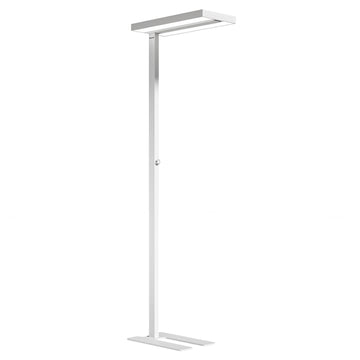Introduction
In the United States, nearly 70% of professional writers report experiencing digital eye fatigue symptoms—ranging from headaches to blurred vision—after just two hours of continuous screen or manuscript work (American Academy of Ophthalmology, 2024). To combat these challenges, customized lighting solutions are essential. Whether you’re an editor meticulously proofing printed pages, a copywriter brainstorming concepts, or a technical writer toggling between multiple screens, the right desk lamp can mean the difference between sustained productivity and chronic discomfort. This guide breaks down occupational lighting needs and helps you select the ideal lighting setup—featuring Honeywell SmartLighting products such as the Smart Table Lamp HWT-H2, the LED Desk Lamp HWT-H9, and the Floor Lamp HWL-02E—to keep your eyes comfortable and your words flowing.
1. Occupational Profiles & Visual Task Analysis
1.1 Editor / Copy Editor
Scenario: Editors often spend 6–8 hours daily scrutinizing printed manuscripts or on-screen proofs. Fine font sizes (8–10 pt) demand constant visual focus at distances of 12–18 inches. Over time, this intense near work can cause ciliary muscle spasms, resulting in blurred vision and headaches.
Lighting Needs:
-
High illuminance: 700 lumens at the work surface to reveal crisp text details.
-
Neutral to cool white color temperature: 3,000–5,000 K to maximize contrast without glare.
-
Glare control: Diffusers or frosted lenses to minimize harsh reflections.
Recommended Solution: The Honeywell Smart Table Lamp HWT-H4 ,adjustable 5-step color temperature and 0–100% dimming.

1.2 Content Planner / Copywriter
Scenario: Creative professionals require flexible ambient lighting that supports mood and idea generation, yet transitions smoothly into focused task lighting when drafting. Inconsistent natural light during early-morning or late-evening ideation can disrupt inspiration flows.
Risks: Natural daylight cycles (≈5500 K at noon vs. ≈2,700 K at dusk) conflict with creative peak times, causing seasonal affective symptoms and reduced idea fluency.
Lighting Needs:
-
Tunable white spectrum: 2,700–5,000 K to simulate dawn-to-dusk cycles.
-
Adjustable beam angle: Wide for ambient brainstorming, narrow for focused drafting.
Recommended Solution: The Honeywell LED Desk Lamp HWT-H9,features 6-color-temperature modes and touch-sensitive control, lets you shift from a warm 2,700 K glow for ideation to a crisp 5,000 K beam for copy editing.

1.3 Technical Documentation Engineer
Scenario: Technical writers frequently alternate between two or three monitors—often with differing display brightness and color profiles. Every shift in focus requires pupillary adjustment, leading to cumulative eye stress.
Risks: A luminance mismatch of as little as 200 cd/m² between adjacent screens can induce pupillary fatigue and lead to symptom clusters like dry eyes and tearing.
Lighting Needs:
-
Even task illumination: 600–800 lux across the entire desk.
-
CRI (Color Rendering Index) ≥97: For accurate rendering of graphics and code color syntax.
Recommended Solution: Honeywell Floor Lamp HWL-02E provides uniform desk and peripheral illumination, reducing abrupt brightness transitions.

1.4 Freelance Writer
Scenario: Freelancers often work irregular hours—early mornings or late nights—in diverse environments (home office, coffee shop, co-working space). Light levels and color temperatures vary dramatically, risking circadian misalignment and impaired sleep quality.
Risks: Exposure to cool-white light (5,500 K) after sunset suppresses melatonin secretion, leading to sleep delay of up to 90 minutes (Harvard Health, 2023).
Lighting Needs:
-
Portability : For on-the-go sessions.
-
Warm-white night mode: 3,000 K to minimize circadian disruption.
-
Adjustable brightness: 10–100% dimming for flexible control.
Recommended Solution: The Honeywell LED Desk Lamp HWT-H01 offersboth USB and Type-C dual output ports (5V/2.1A),3,000 K “Evening” preset to safeguard sleep patterns.

2. Visual Health Warnings
2.1 Short-Term Effects
-
Digital Eye Fatigue: Dryness, soreness, blurred vision after ≥2 hours of uninterrupted near work (AAO, 2024).
-
Reduced Efficiency: Studies link suboptimal desk lighting (<300 lux) with a 15–20% drop in typing speed and error rate increase of up to 25% (Journal of Ergonomics, 2022).
2.2 Long-Term Risks
-
Macular Stress: Chronic exposure to blue-rich white light (>4,000 K) correlates with accelerated retinal pigment epithelium degeneration (Ophthalmology Research, 2021).
-
Circadian Disruption: Nighttime exposure to high-CCT lighting can shift circadian phase by up to 2 hours per week, raising metabolic disorder risks (Sleep Medicine Reviews, 2020).
3. Upgraded Purchasing Criteria
Occupational Lighting Matrix
| Writer Type | Recommended Illuminance | Color Temperature | CRI | Key Feature |
|---|---|---|---|---|
| Editor | 800–1,000 lux | 4,000–5,000 K | ≥90 | Diffused lens |
| Copywriter | 500–800 lux | 2,700–6,500 K | ≥85 | Tunable white |
| Technical Engineer | 600–800 lux | 4,000 K | ≥90 | Gooseneck glare control |
| Freelance Writer | 300–600 lux | ≤3,000 K (night) | ≥80 | Rechargeable battery |










